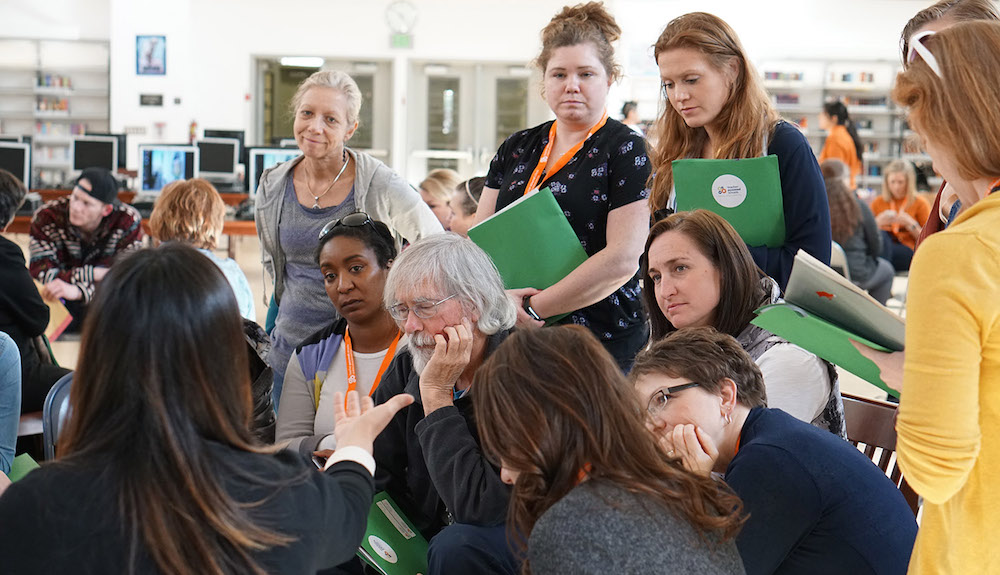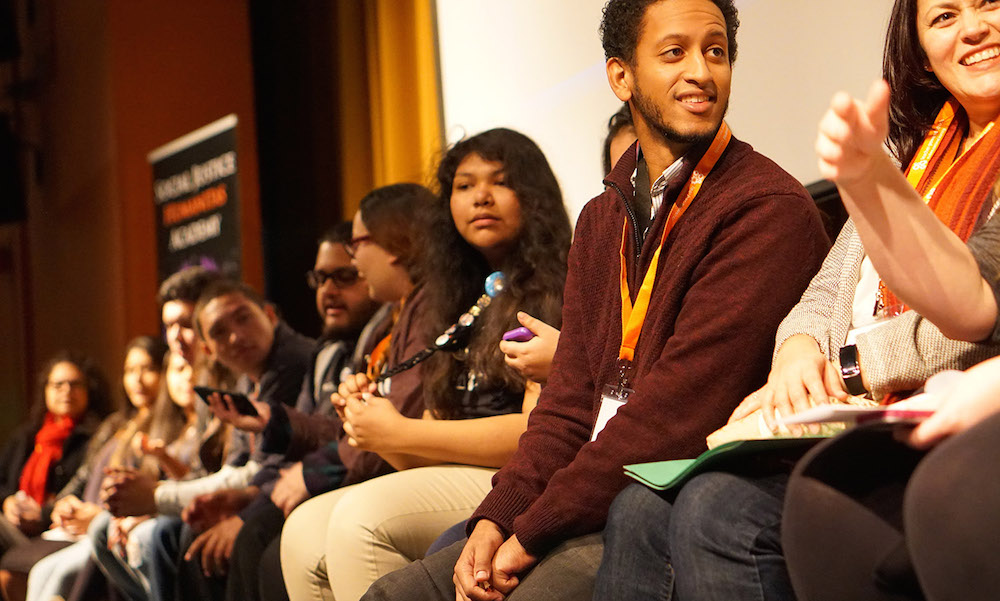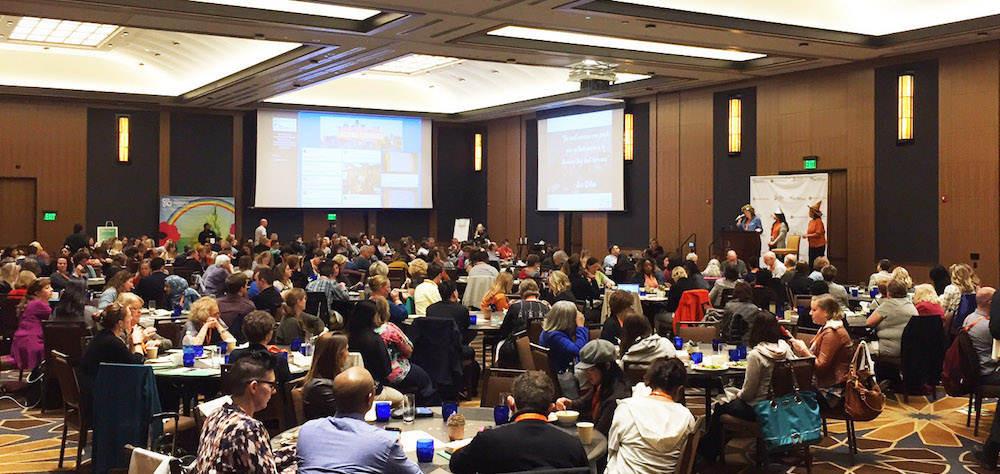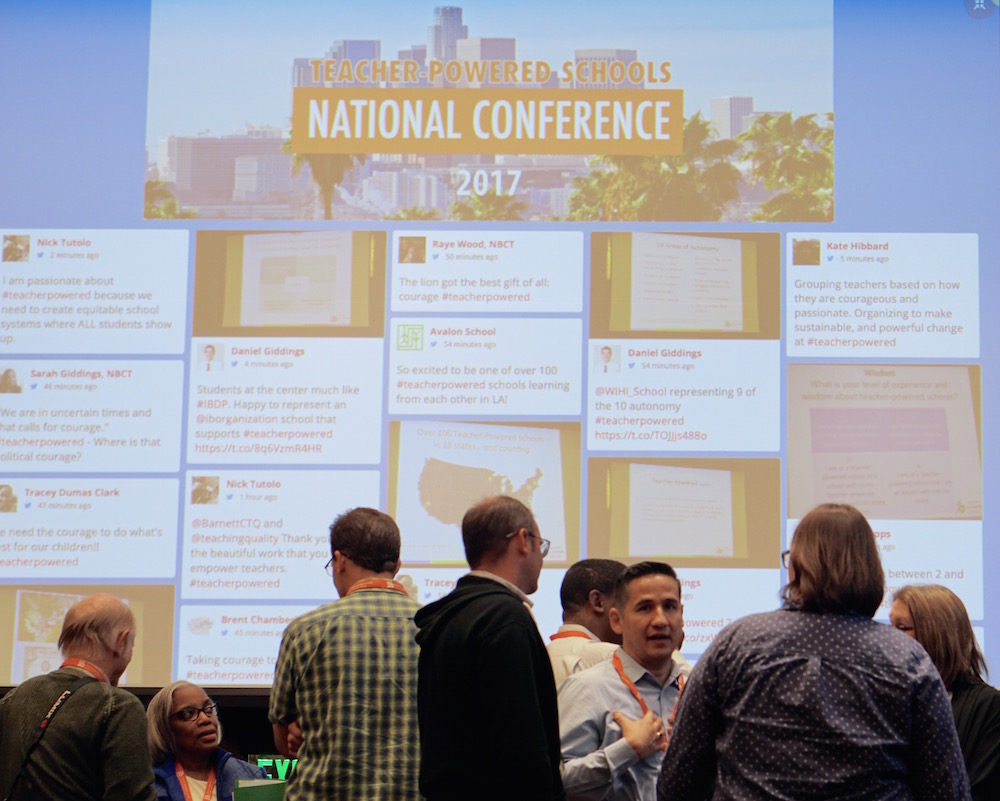Across the country, a growing movement of teacher teams at over 100 schools in 18 states are transforming student learning and the teaching profession through teacher-powered schools—that is, schools designed and run by teams of teachers. Over the weekend, 275 educators and advocates from 22 states gathered in Los Angeles for the second Teacher-Powered Schools National Conference.
Site Visits to Teacher-Powered Schools in Action
The conference, hosted by Education Evolving (EE) and the Center for Teaching Quality (CTQ), started with a school tour of the Robert F. Kennedy Community (RFK) Schools campus.

The campus comprises six autonomous Pilot Schools that serve 4000 students in grades K-12 in the historically underserved Los Angeles neighborhoods of Pico-Union and Koreatown. The schools place a strong emphasis on social justice in their learning programs, as a living legacy to RFK. During the tour, attendees heard from RFK teachers and students about how collaborative leadership has positively impacted their school.
The following day, attendees visited Social Justice Humanitas Academy (SJHA), another teacher-powered school that serves over 500 students in grades 9-12 in San Fernando, CA. Located on the Cesar Chavez Learning Campus, SJHA is on the border between the territory of two rival gangs. Their student population is 87 percent Free and Reduced Lunch; 80 percent English Language Learners; and only 29 percent of parents have a high school diploma. Yet, their students exceed all expectations with a 94 percent graduation rate (LAUSD’s average is 74 percent). In 2015, SJHA had the second highest student achievement of all schools in LAUSD, excluding magnet schools.
After the tour, a panel of students and teachers discussed what it’s like to teach and learn in a teacher-powered school, and the reasons why the school is so successful. According to one teacher, she likes working in a teacher-powered school because, “It gives us the freedom to make the decisions that we know are best for our students.” Another teacher highlighted the social justice curriculum explaining that, “Social justice is both a what and a how.”

Several students echoed these sentiments. According to one student, “The teachers take ownership of their curriculum, classroom, and students to make sure that we are being pushed academically.” Another student noted that she liked that SJHA taught them that, “You can be a good person and a good student at the same time…We [students] take care of one another.”
Learning from the Teacher-Powered Pioneers
The conference—hosted by EE’s Amy Junge, as well as Kim Farris-Berg and Lori Nazareno—featured teacher-powered practitioners from both the district and charter sectors, who shared insight into how they collaboratively design and run their schools. “Autonomy is a means and an opportunity, not the vehicle of teacher-powered schools. The vehicles are the teachers,” said Amy Junge.
Several principals explained that, while most teacher-powered schools in fact do have principals, their role is reinvented. They see their job as facilitating the school team in carrying out group decisions and shared purpose—rather than ensuring compliance with decisions from outside—and often teach part of the school day.
All conference attendees, whether they currently work in a teacher-powered school or are in the planning period, had the opportunity to interact and learn from one another. Additionally, teacher teams had dedicated time to collaborate, and to incorporate and adapt lessons learned into their school designs.

The conference breakout sessions were designed by teacher-powered practitioners with experience in shared leadership, collaborative cultures, and student centered decision-making. There were also learning strands designed for union leaders and administrators interested in how they can create space for teacher-powered schools.
A Uniting Movement
In a time when news headlines are dominated by uncertainty and gridlock—in education and beyond—there was a strong sense of unity and shared purpose at the conference, among groups that are sometimes at odds.
Attendees included teachers from both district schools (about 75 percent) and charter schools (25 percent); teachers from union schools and schools without union affiliation; and teachers from small rural schools and large urban schools. In addition, dozens of people in support roles attended, including union leaders, superintendents, principals, and policy advocates.
“Teacher-powered brings together teachers with ideas for how to better meet student needs; principals who see the power in collaborative leadership; and unions seeking to advance community-responsive schools and teacher professionalism,” said Amy Junge.

Recognizing Leaders in the Movement
Several schools and individuals were recognized at the conference for their achievements in advancing the teacher-powered schools movement:
- Extraordinary Achievement Award: Chrysalis Charter School in Palo Cedro, CA and Mission Hill K-8 School in Boston, MA
- School-Union-District Partnership Award: United Federation of Teachers, NYC Department of Education, and Council of School Supervisors and Administrators for the PROSE Initiative
- Advancements in Research Award: Dr. Karen Hunter Quartz, Professor at UCLA Graduate School of Education and Information Studies
For more information on teacher-powered schools, including an inventory, visit the website.
Found this useful? Sign up to receive Education Evolving blog posts by email.